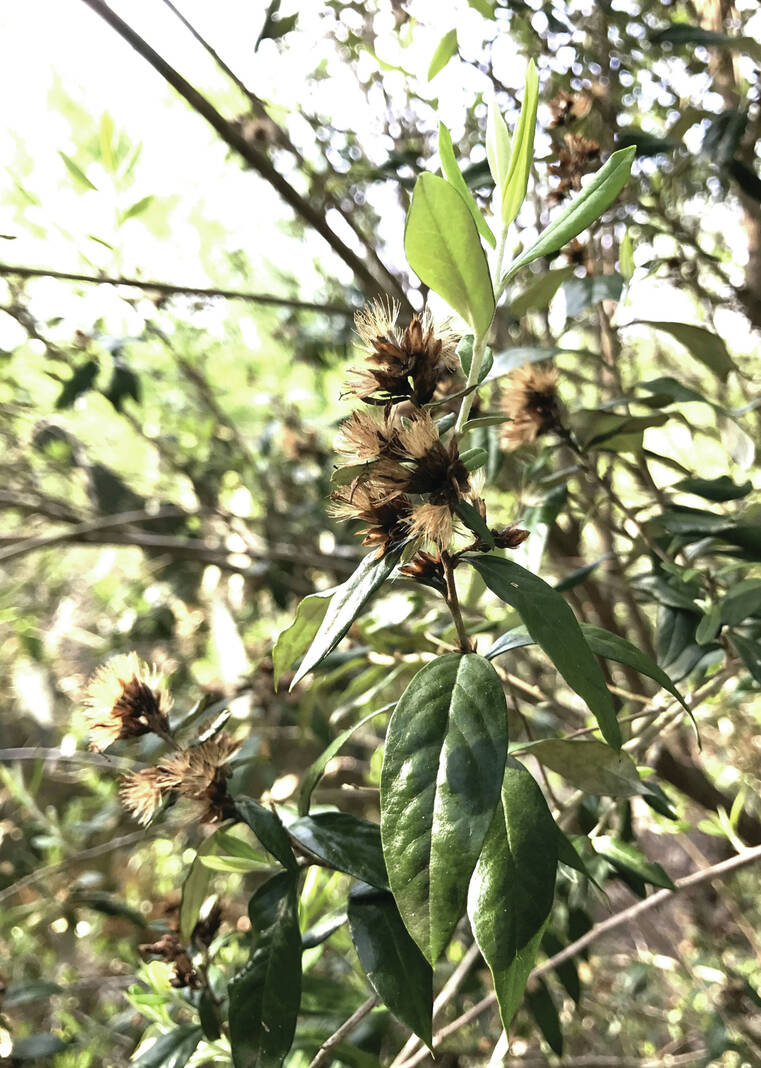Only have a minute? Listen instead |
Drought- and heat-tolerant might be the important words to look for when researching descriptions for plants to add to your landscape — especially after the searing summers of late.
Whether building or adding to an existing nectar, pollinator or butterfly garden, or looking to add interest to your landscape, consider some of the lesser-used native shrubs.
The following three shrubs tolerate drought, heat and poor, rocky soils; they are good candidates for rock gardens or xeriscaping, thornless, grow in full sun or partial shade, maintenance free, and amongst the three, bloom and provide nectar and attract butterflies during most of the months of the year.

Chomonque (rhymes with monkey), Gochnatia hypoleuca, is a shrub that can grow to 10 feet tall. It is native to extreme South Texas and northern Mexico.
It is an important butterfly nectar plant because it blooms from fall to spring, offering nectar in the winter when many other plants are not blooming. Clusters of small pinkish-white flowers bloom at the branch tips. They are only slightly fragrant, but fragrance has no bearing on nectar content.
Shrub growth is non-uniform on thin, upright branches. Leaves are smooth, dark green elliptic blades about two inches long. The leaf’s underside is silvery-white, giving the shrub a two-tone effect.
Chomonque’s native habitat is gravelly and caliche soils in dry scrub desert-like vegetation.
Hog plum, Colubrina texensis, also called Texas snakewood, is another native shrub underutilized in residential gardens. It is native to south Texas and south to Tamaulipas in northeastern Mexico.
Hog plum can bloom from March to July. The flowers are small, greenish-yellow and bloom one to two or more at the leaf axils. They attract nectar insects in spring and summer. The fruit is eaten by birds.

The shrub’s branches have a twisting, zigzag growth and can grow three to six feet in height. It is naturally lanky or can be kept to a shape with minimal pruning. The leaves are small, lime-green and oval with well-defined veins; new growth leaves are hairy initially.
The shrub’s natural habitat is gravelly arroyos and rocky hillsides of southwestern Texas.
Coyotillo, Karwinskia humboldtiana, is an attractive and interesting shrub popular in public butterfly gardens. It is larval host plant to the two-barred flasher butterfly, a Central American butterfly whose northern most range is the Lower Rio Grande Valley. The caterpillar forms a chrysalis by first sealing a coyotillo leaf around itself.
The coyotillo shrub is native to southern and western Texas and much of Mexico. It blooms summer and fall. It can grow as tall as six feet with slender arching branches that create a full but airy shape nearly five feet wide.
When in bloom, tiny greenish-white clusters of flowers cover the shrub all along the branch ends.
The leaves are soft green shapely blades with prominent veins. A caution, leaves and seeds are poisonous. Coyotes are able to tolerate eating the leaves and fruit, hence the shrub’s name, which translates as little coyote. Chachalacas also can safely eat the fruit.
Anita Westervelt is a Texas Master Naturalist.

